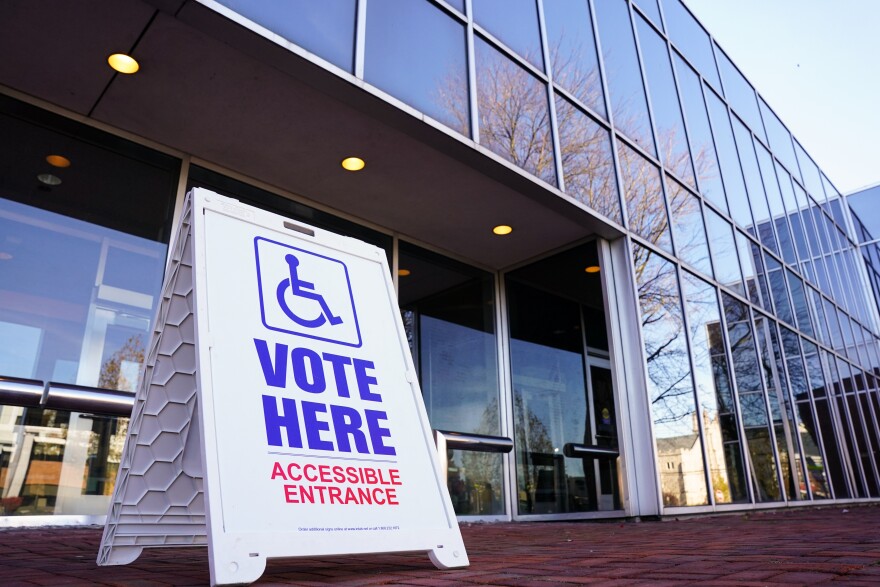Election Day has come and gone in Pennsylvania, largely without issue. But for county officials in charge of voting around the state, the job isn’t over.
For the most part, the state avoided high-profile missteps like the ballot paper shortage that Luzerne County experienced in 2022. And with the exception of the U.S. Senate race, decisive margins and quick concessions have helped the state avoid a post-election period marred by disputes.
Still, several critical steps have to occur between now and when President-elect Donald Trump and other winners take office. Here are the key procedures that will play out over the next few weeks.
A double double-check
Pennsylvania’s 67 counties are required after each election to audit their results to ensure accuracy.
The first check they do is the “statistical sample,” which is more commonly called the “2% audit.” This is a statutorily required recount of 2% of the ballots cast in a county, or 2,000 total ballots if that number is fewer, which it typically is. The ballots are randomly selected.
Counties use a different method to count ballots during the audit than they did originally. Some do this using vote tabulation machines that are different from those used on Election Day, while others hand-count ballots.
Counties must complete these recounts before the deadline to certify their election results, which this year is Nov. 25. Some counties have already completed the audit, while others will do so in the next two weeks.
This isn’t the only audit counties perform. As the result of a 2018 settlement in a lawsuit brought by Jill Stein, the Green Party presidential candidate, Pennsylvania now conducts risk-limited audits statewide.
With the 2% audit, an election administrator could choose to only examine ballots from just a few precincts. While that review could uncover a problem with those specific precincts or the ballots cast there, it won’t reveal much about the election as a whole.
A risk-limiting audit is designed to check the margin of a race to confirm that the reported winner actually won. The process begins with Pennsylvania Department of State workers rolling a set of 10-sided dice to generate a random number, which is fed into an algorithm that determines which ballots counties need to examine. That process guarantees that no one knows ahead of time which ballots will be recounted, making it impossible to manipulate the outcome.
If a race has a closer margin, the algorithm requires that more batches of ballots be reviewed to verify the outcome. If the margin is wider, fewer batches need to be checked.
The races that will be included in this year’s risk-limiting audit will be announced Wednesday, and the dice roll will occur Friday, according to a Department of State spokesperson. Counties where a batch is selected will have until the Nov. 25 certification deadline to recount.
When a race moves to a recount
The presidential contest in Pennsylvania was decided by a large enough margin that the outcome was apparent soon after Election Day. The same cannot be said for the U.S. Senate race.
While the Associated Press has called the race for Republican Dave McCormick based on an analysis of the votes left to be counted — including provisional ballots cast when a voter’s eligibility is in question — incumbent Democratic U.S. Sen. Bob Casey had not conceded as of Friday.
As of 12 p.m. Friday, McCormick had 48.89% of the vote to Casey’s 48.54%, according to the Pennsylvania Department of State’s website.
Under Pennsylvania law, a recount is automatically triggered when a race’s result falls within 0.5%. Pennsylvania’s top election official, Secretary of the Commonwealth Al Schmidt, ordered the recount on Nov. 14. The recount then must begin by Nov. 20, and results must be submitted to the secretary by Nov. 27.
However, recounts rarely change the outcome of a race.
FairVote, a nonprofit that advocates for ranked-choice voting, analyzed nearly 7,000 statewide races between 2000 and 2023. It found 36 recounts in that time, only three of which resulted in a change of outcome.
“All three reversals occurred when the initial margin was less than 0.06% of all votes cast for the top two candidates,” the report said.
According to the Pennsylvania Department of State, there have been seven statewide recounts since the 0.5% rule went into effect in 2004. None changed who won.
Three voters in a precinct can also request a recount if they believe that fraud or error occurred. Such a recount only applies to ballots cast in the voters’ precinct, which is the smallest voting district, usually just a few hundred voters and sometimes no larger than a city block.
While there were fears such recounts would be weaponized this year and delay the certification of the results, so far that has not happened.
Certifying Pennsylvania’s results
Once all the ballots have been counted, counties reach the final step: certification.
Certification is a two-step process for counties. First, a county's board of election signs a certification of the results, which is considered unofficial for five days. During that period, objections or petitions for recounts can be made.
Counties sign the certification a second time at the end of the five days or when objections are resolved. Then they send the certification to the Pennsylvania Department of State, and the results are finalized. For the 2024 election, this process must be completed by Nov. 25.
For most races, that is the end of the story. But for the presidential contest, there is one more important step.
On Dec. 11, Schmidt will provide the statewide results to Democratic Gov. Josh Shapiro, who in turn will sign a “certificate of ascertainment of appointment of electors.” It authorizes the winning presidential candidates’ electors to cast their votes in the Electoral College. That vote will take place on Dec. 17 in Harrisburg.
90.5 WESA partners with Spotlight PA, a collaborative, reader-funded newsroom producing accountability journalism for all of Pennsylvania. More at spotlightpa.org.





